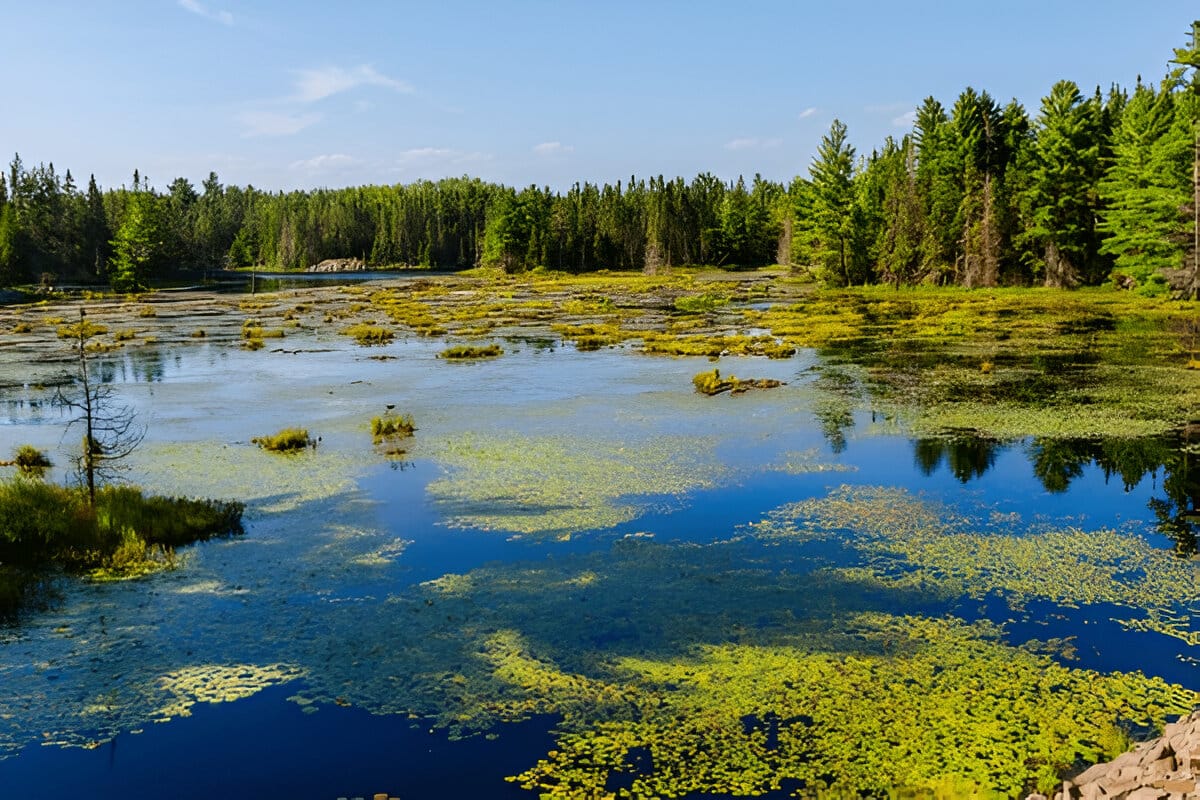
How to Identify Common Invasive Aquatic Weeds in Canadian Lakes
Invasive aquatic weeds are plants that don’t belong in Canadian lakes and ponds. These weeds grow fast, taking over the water and harming native plants
Choosing the right fish for your pond is more than just picking the ones you like. Each species has different needs, and your pond has its own conditions. Whether you’re creating a decorative fish pond, stocking a trout pond for fishing, or building a small fishery in Canada, this guide will help you make the best decisions for long-term health and success.
Your pond is an ecosystem. Stocking it with the wrong type of fish can throw off its balance. Some fish need oxygen-rich water and cooler temperatures, while others can tolerate shallow, warmer, or murkier environments. The wrong choice may lead to overpopulation, algae issues, fish die-offs, or water quality problems.
Matching fish species with your pond’s depth, surface area, water temperature, and purpose—for beauty, fishing, or frog control—helps create a healthy, self-sustaining system.
According to Fisheries and Oceans Canada, improper pond stocking and nutrient imbalance can lead to algal blooms and oxygen crashes, which account for 70% of fish mortality cases in private ponds during summer months.
1. Goldfish
2. Koi
3 Catfish
Fish to put in larger ponds to catch or feed
Trout (Brook, Rainbow, Brown)
Trout need deep, cool, and highly oxygenated water to survive. Brook trout, in particular, are sensitive to warm temperatures and low oxygen. Rainbow trout are slightly more tolerant, but all trout species require a well-maintained, deep pond with constant aeration. Stocking trout in Canada is only suitable for ponds where the water temperature stays below 21°C in summer.
“In most provinces, stocking trout is only practical if the pond receives flow from a cold stream or is deeper than 14 feet with proper aeration,” says Jacques Bouchard, a regional fisheries biologist with the Ministère des Forêts, de la Faune et des Parcs (MFFP) in Quebec.
Bass, especially smallmouth bass, are excellent for ponds that get warmer in the summer. They feed on frogs, insects, and other small fish, helping to regulate populations. Bluegill and sunfish provide a steady food base for bass and are ideal for multi-species fishing ponds.
Channel catfish are bottom dwellers and are good for larger ponds. They’re tolerant of muddy conditions and can help clean up uneaten food. Catfish are also resilient to warm water and lower oxygen levels.
Fathead minnows and other small fish help control mosquito larvae and serve as forage fish for larger species. They’re a must-have in balanced ecosystems and are especially useful for newly established ponds.
A healthy fish pond needs at least one-third of its area to be over 6 feet deep. Shallow areas should be deeper than 2 feet to prevent weed overgrowth. Larger ponds offer more temperature stability and support more species.
Coldwater fish like trout need water below 21°C. Warmwater fish like bass and catfish can survive water above 28°C. Stocking success depends on matching species with seasonal temperatures in your region.
All fish need oxygen, but trout and koi are especially sensitive. Aeration is essential in summer when oxygen levels drop and in winter to prevent ice from sealing off the pond completely.
Install a filter if you stock koi, trout, or catfish. These fish create waste, and proper filtration prevents ammonia buildup.
📊 A 2022 study from the University of Guelph found that pond owners using aeration and proper fish density had 43% fewer algae blooms and 57% higher fish survival rates compared to unmanaged ponds.
Introduce fish slowly to allow them to adjust to the water conditions. Start with fewer fish than you think you need. Monitor water quality using basic test kits, especially during seasonal transitions.
Use native or locally raised fish when possible. They’re better adapted to your climate and less likely to introduce disease. For guidance, check your provincial ministry of natural resources or consult the DFO Aquaculture Guidelines for stocking policies.
Choosing fish for your pond isn’t about picking favorites—it’s about creating a balanced, thriving ecosystem that suits your environment and goals. Whether you’re starting a trout pond, stocking a bass fishery, or adding beauty with koi or goldfish, the right fish will keep your pond healthy and rewarding.
Pair fish with proper aeration, filtration, and pond depth. This combination will make your fish pond easier to manage and more enjoyable all year long.
For help with pond design, stocking permits, or local hatcheries, visit ontario.ca/fish or contact your provincial conservation office.

Invasive aquatic weeds are plants that don’t belong in Canadian lakes and ponds. These weeds grow fast, taking over the water and harming native plants

If your pond water has turned green or is starting to develop stringy mats on the surface, you’re likely dealing with algae. For Canadian pond

If your backyard pond in Canada is turning green or developing stringy messes on the surface, algae is likely the reason. Algae blooms are common,

Accidentally, when you looked at your pond and thought, “Why does the water look so off lately?” Maybe it’s starting to turn murky, algae are

Pond dye is a widely used tool for improving the appearance and health of ponds, but is it safe? This article dives into the safety